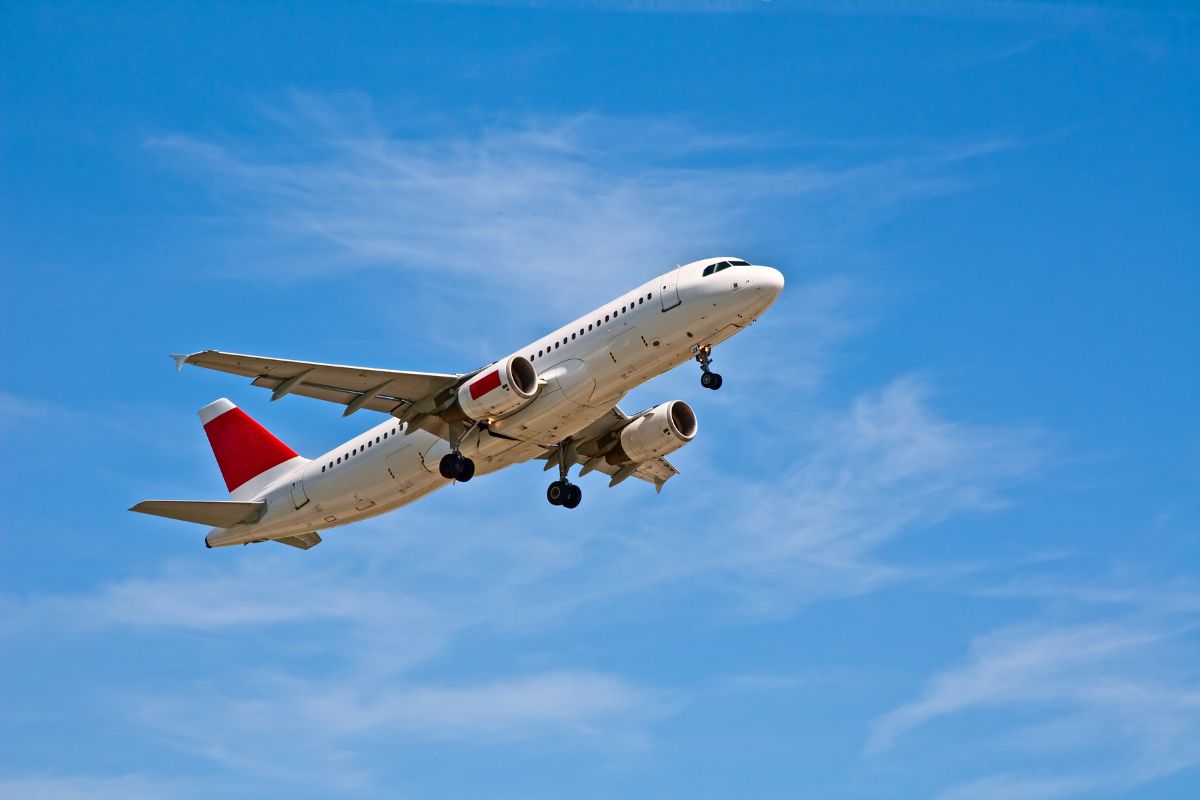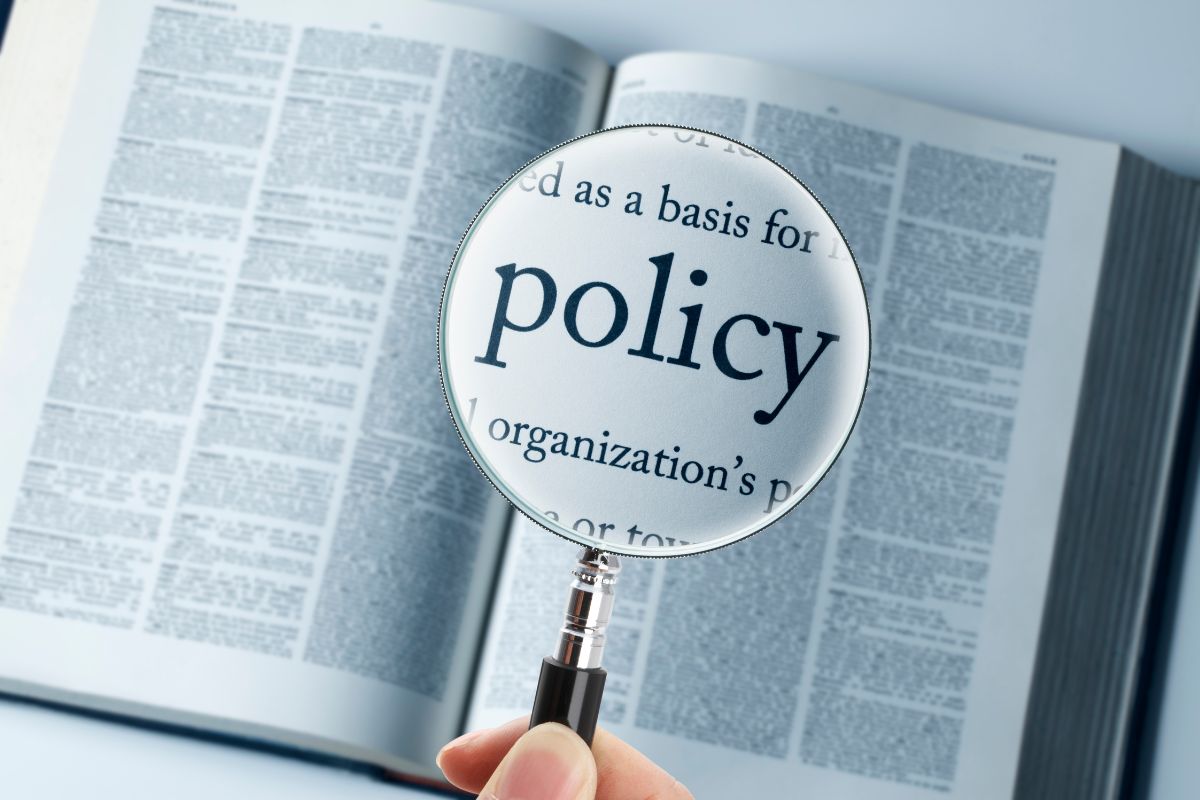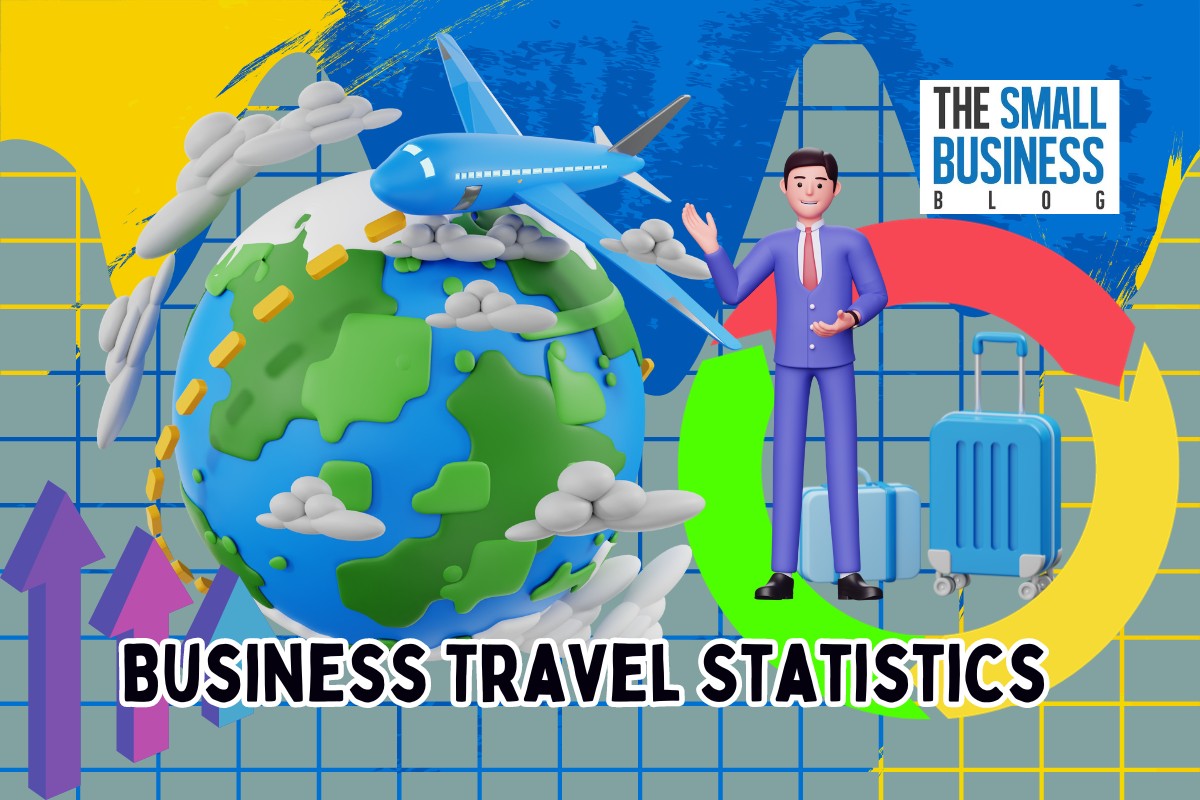Most people are used to working in the same environment for their 9 to 5, but business travel statistics show us that this isn’t the case for everyone.
Traveling for business isn’t a new concept, and you’d be surprised at how large the business travel industry actually is.
At a glance, this industry brings in roughly $387 billion in annual revenue in the U.S. alone.
For this article, we will explore the true depths of the business travel industry and highlight just how important it is to the modern corporate world.
Post Contents
Key Statistics
- Business travel accounts for 75% of airline profits in the U.S.
- $949 is the average cost of travel fees for the average American business professional
- 35% of businesses in the United States use some form of business travel
- Delayed flights are a top concern for 73.2% of business travelers, among others
- Meals are the most common business travel expenditure, with 21% of businesses allocating money toward the travel need
- 54% of business travelers highly value real-time travel notifications
- In 2022, business travelers in the U.S. took 371 million domestic trips
- Data taken from 2020 shows the global business travel market is worth roughly $700 billion
- The number one company for business air travel in the U.S. is Amazon, reporting $483 million in business travel expenses for 2022
Business Travel Statistics in 2024: A General Breakdown
The bullet points above prove the business travel market is much more than you think.
Even if you never travel for business once in your life, there are millions of other professionals who do.
Overall, it’s a market that churns a lot of business from many different angles.
Aside from any B2B transactions related to the purpose of the trip itself, travelers end up spending money on all sorts of wants and necessities.
For starters, we’re going to focus on a few statistics that offer a general breakdown of the market’s current situation.
1. Airlines Heavily Rely on Business Travel

Booking a flight is commonly associated with some sort of vacation, but the airline industry is actually much more reliant on business travelers.
Recent data shows that business travel accounts for 75% of airlines’ profits in the United States.
That’s a significant portion of the industry, and it’s pretty clear that business travelers are critical in keeping the industry alive.
You can also take this information and see why the airline industry took such a strong financial hit during the peak of Covid.
Although business travelers make up 75% of the profits, they only account for 12% of all air travel in the U.S. each year.
This also shows just how much money people spend on their business trips.
Of course, this is pretty easy to do, considering most, if not all of the trip is comped by the employer.
(Zippia)
2. Average Cost of Travel Fees
You can assume that professionals travel for all sorts of reasons, and each trip is bound to come with varying costs.
For business professionals in the United States, the average cost of travel lands around $949.
Of course, this is guaranteed to fluctuate quite a bit from one traveler to the next, but it’s an average that provides some perspective.
It’s also an insight into the scale of potential costs that organizations take on simply for business travel.
One could argue that this average number could be slimmed down a bit by choice.
However, it isn’t hard to reach that number between airfare and sleeping accommodations.
Even if it’s a quick trip, it could still cost 2-3 days of travel before it’s all said and done.
(Zippia)
3. Organizations and Business Travel
In the United States, it isn’t uncommon for businesses to make use of travel to some degree.
Around 35% of businesses in the U.S. make use of business travel.
While some are bound to engage in it more than others, 35% is still a large portion of the U.S. market.
This number is likely to increase in the coming years as we continue to march toward an inevitable global economy.
In many ways, the corporate world is already there, but it’s only becoming more prevalent as time goes on.
The number of organizations in the U.S. that travel for business also makes one wonder why over 60% of the market doesn’t.
It’s safe to say this is for a wide variety of reasons.
With the rise of communication technology, it’s easier than ever to do business with nearly any region in the world.
(Zippia)
4. Top Concerns for Business Travelers
Regardless of how common business travel may be, it can be a relatively stressful experience for a number of reasons.
Between the job itself, commuting, and unexpected events along the way, data can tell you that there are a few primary concerns among business travelers.
The chart below highlights some of the most consistent concerns among travelers in the corporate world.

Understandably, delayed flights are a primary concern, as that can put a damper on the entire schedule for the business trip.
While these aren’t always a guarantee, it’s a big enough problem to be a top concern for business travelers.
You could do plenty to help avoid this situation, but the unfortunate truth is that sometimes it’s entirely out of your hands.
(FinancesOnline)
5. Business Travel Expenditures
Each business trip is going to come with a variety of expenses, some being more common or expensive than others.
Aside from that fact, there are several purchases that are known to be commonly associated with business travel.
Meals, flights, accommodations, and several other categories are pretty much essential for those who travel for business.
For a more detailed look, the chart below offers insight into the many common expenditures related to business travel.

There are definitely quite a few other expenses that aren’t listed here, but these are the most common for most business professionals.
Of course, these are all considered business expenses, but they still have to be tracked closely for the sake of the employee, the organization, their taxes, and more.
(FinancesOnline)
The Data In Between the Lines
You can go past surface-level data and find more specific statistics pertaining to business travel.
Considering how long the industry has been around, industry analysts have been able to collect many specific data points.
The following sections will focus on more detailed aspects of business travel statistics.
From the individual traveler to national and global stats, the numbers below will provide a more thorough view of the business travel market as a whole.
6. What Do Business Travelers Value the Most?
Aside from general creature comforts to get through each day, there are several necessities that travelers value the most.
54% of business travelers put a lot of value in real-time travel notifications.
Being on time matters a lot in the corporate world, and travel notifications are essential to catching every commute.
Moreover, 46% look for automatic flight rebooking options and 39% prefer face-to-face interaction with airline agents.
These might sound random, but all of them put together make for a much easier travel experience.
When it comes to business, people just want everything to go as smoothly as possible.
A majority of what professionals want in this scenario is to have all of their bases covered ahead of time.
(FinancesOnline)
7. Domestic Trips for U.S. Business Travelers

In 2022, American travelers took 371 million domestic business trips.
While this number is considerably healthy, this wasn’t the case just a few years ago.
At the height of the pandemic in 2020, this figure landed at roughly 181 million for the year.
You can see from the data in this article alone how the airline industry was impacted from so many different angles.
You can also look at this data from the perspective of international business travelers in the U.S.
Reviewing data from 2021, you’ll find that 711,000 international business travelers visited the U.S.
This is actually even lower than dropping numbers in 2020.
In turn, this inevitably affected business travel spending from a domestic and international standpoint.
Even though some figures dropped year over year during the peak of Covid, the U.S. was still seen as the country with the highest business travel spending during 2021.
Combining domestic and international expenditures, the U.S. spent $269.3 billion on business tourism for that year.
(Statista)
8. The Global Business Travel Market
Looking into the past, present, and future, the global business travel market will go through some sizable changes.
In 2020, the market was worth around $700 billion.
However, by 2028, this number is expected to reach upwards of $2 trillion or more.
With expectations of 188% in growth, it’s safe to say that the market will be thriving more than ever.
This growth also comes with an estimated compound annual growth rate (CAGR) of 13.2%.
You’re bound to find varying sentiments on the topic, but the consensus is that the business travel market will be massive compared to where it is today.
There are a few core contributors when it comes to this industry, a few of which can be found listed below:
- Combination of business and leisure accommodations
- More personalized services make business travel more comfortable
- Pre-screening technology for domestic and international travel
- Innovation and expansion in the global hotel industry
Of course, these are just a few angles that highlight what’s helping to drive the market forward.
Keep in mind that many of these figures are merely projections, and the true state of the business travel market could look a lot different by 2028.
(PRNewsWire/Statista)
9. Leading Companies in Business Travel Expenses
Although thousands of companies are participating in the business travel market, you can expect that a handful of them lead the way in expenditures.
Data on this particular topic is pretty interesting, considering the effect Covid had on the corporate world in recent years.
Below, you can find a chart that highlights some of the leading companies in business travel spending.

Amazon has been in the news on more than one occasion for the companies spending on business travel.
While many argue over whether these travels are warranted or not, the companies above are major players in the business travel market.
Remember that this is only a fraction of the organizations that utilize business travel on a yearly basis.
Some clearly partake in it more than others, but the data above shows the reality of how profitable the industry is.
The truth is that travel for business is a necessity in the corporate world, and it has only become more important now that we live in such an integrated global economy.
(Statista)
10. Business Travel and Technology
Research has shown that most, if not all business travelers expect technology to be a core part of their experience as a whole.
To offer more clarity on this, 55% of business travelers expect many destinations in the world to shift to a completely cashless society in the near future.
From another angle, 51% expect all of their payments to be made through mobile devices down the road.
A lot of this has merit, considering technologies’ further integration into our everyday lives.
While you’ll find plenty of people against this idea, many others looking for more efficiency and convenience will accept the change with open arms.
Many traveling business professionals fall into that category, as they’re generally working within certain time constraints.
Traveling for business can be highly stressful, and technology has the ability to help streamline the whole process.
(BusinessTravelNewsEurope)
The Definition of Work Hard Play Hard
A majority of business professionals travel with the main goal at the forefront of their minds.
However, depending on the destination, it can be hard to ignore the fact that traveling can be exciting.
This leads many business travelers to explore their surroundings and enjoy their time outside of work.
With many coining the term “bleisure”, combining business and leisure isn’t a foreign concept, and there’s plenty of data to back that up.
11. Business Trips Extended Just for Leisure Time

This might sound outlandish or an added perk for some, but it isn’t uncommon for many business travelers to extend their trip for a little vacation time.
It’s reported that 40% of business trips are extended for the sake of a little leisure before heading home.
The reality is that business expenses can be pretty easy to write off, and many people have a lot more work flexibility nowadays.
We can all thank the shift in work culture that came from the pandemic, as remote work is seen as an increasing norm with each passing year.
You’re bound to come across some people who find this irresponsible, but plenty of employers don’t mind it.
This data will also vary depending on whether the corporate trip is just one person or a team of people.
There are many influences that come from traveling, and business professionals aren’t immune to the travel bug.
(FinancesOnline)
12. Only Half of Business Travelers Follow Company Policy
Whether it’s due to a lack of training, a convoluted policy, or an employee who doesn’t care, 50% of business travelers don’t follow company policy while away.
It should be noted that this statistic is primarily focused on business travel policies.
Many people would agree that all of the little rules and details can be hard to follow.
Not only is the work itself important, but every single expenditure has to be tracked on top of any other specific policy details.
Of course, you can assume this stat has led to some internal issues at the office, but it isn’t always a bad thing.
It can be beneficial in some cases as employees will be more focused on the work than micromanaged rules.
On a side note, 60% of business travelers don’t even have a clear understanding of their organization’s business travel policy.
(Zippia)
13. Fun is Always a Part of the Trip

No matter how much a professional may deny it, most people find time for a bit of fun on a business trip.
Data supports this as it shows that 80% of business travelers schedule some fun before returning home.
This can make the trip a lot more bearable and less stressful.
Now, there’s a line to be crossed when it comes to fun on a business trip, but this doesn’t generally stop anyone.
The percentage for this statistic is relatively high as most people are on the same page about this.
On business trips, most employees can’t be easily micromanaged.
For many employers, as long as the work is getting handled, they could care less what traveling employees do with their time.
You won’t find this sentiment with every employer, but those who are used to funding business travel generally won’t bat an eye on a little fun.
(FinancesOnline)
14. Primary Reasons for Business Travel
Considering how connected the business world is today, many different kinds of professionals travel for work.
It isn’t just pencil-pushing documents behind a desk anymore.
People are networking, meeting clients, and diving into professional development help on a global scale.
Here are the main reasons people travel for business:
- Attending conferences = 62%
- Meeting other companies for business planning = 56%
- Professional development = 44%
- Meeting coworkers in another location = 40%
- Pitching new products = 30%
There is a long list of reasons why people participate in business travel.
Some organizations require it, while others see it as an extra strategic step toward business growth.
Even with the rise of video calls, the business travel market will continue to succeed as in-person interactions are still a vital part of the corporate world as a whole.
It should be mentioned that some of these reasons for business travel are guaranteed to shift over time.
Some events or meetings take priority over others, while some simply hold more value in the long run.
Many traditional aspects of business travel are on their way out.
This is due to changing norms and etiquettes in the business world and shifting interests among industries all across the world.
The pandemic may have put a damper on the market, but as soon as the world opened back up, business travel saw record numbers in no time.
(FinancesOnline)
15. Issues with Travel Policy Compliance

Easier said than done; many business travel managers are having a hard time with policy compliance levels.
Some of the issues that stem from this are honest mistakes.
Then again, it can be frustrating that 72% of corporate travel managers can’t get employees to follow policy.
There are a few reasons for this.
Fairness and transparency between both parties, issues with the traveler’s experience, and failing to meet budget requirements are all key issues.
Whether it’s one or 50 employees traveling for work, managing everything can be a challenge for both sides of the coin.
Companies rely on the word of their employees, who also rely on many of the resources the employer provides.
Both need each other for a successful business travel experience.
With issues like this in policy compliance, many companies will be forced to refine their policies to be easier to navigate for the general workforce.
Even though business travel isn’t new to our modern world, many of the associated norms are going through some shifts.
Between the rise in remote work, technology integrations, and a shifting global economy, business travel will become more prevalent as time goes on.
(Zippia)
Final Thoughts
There are plenty of business professionals who will never have to travel for work, but there are millions of others who are fueling the market forward.
Traveling for business is more common than ever, thanks to the ease of transportation, lodging, and many other modern comforts.
While some countries are bound to lead the way in this particular market, it’s the world as a whole that’s ensuring the market thrives in the long run.
For this article, we broke down the realities of business travel statistics while highlighting many important shifts in the corporate world.






























